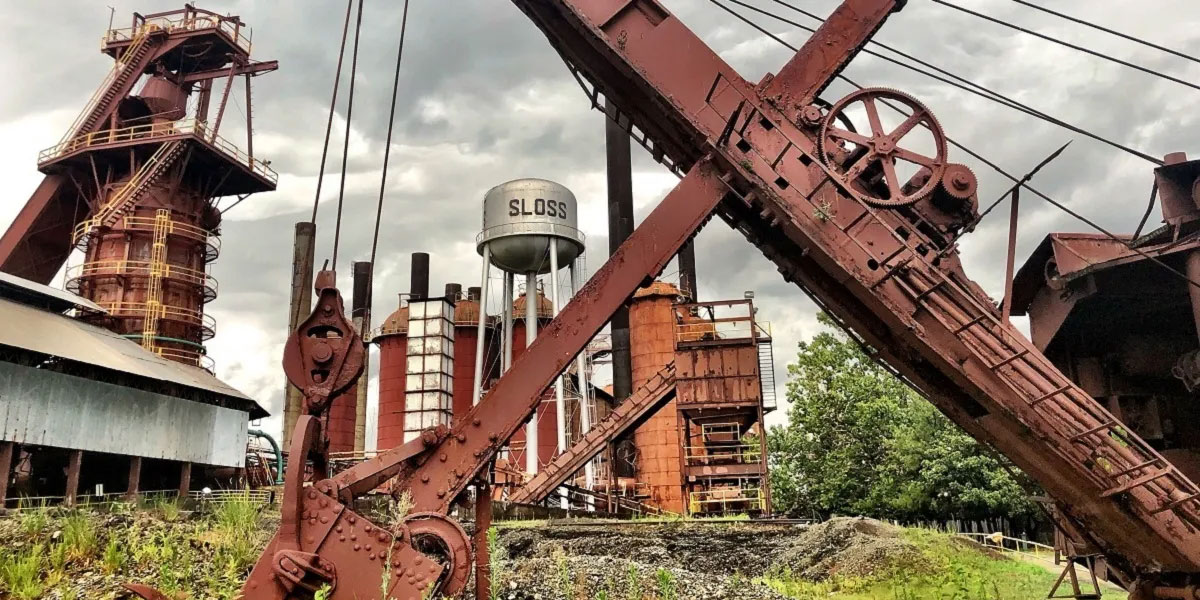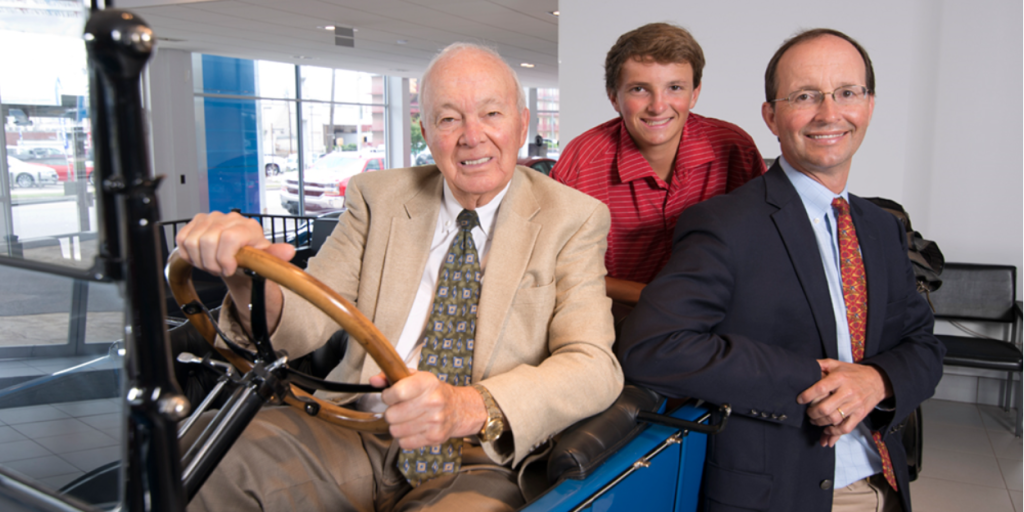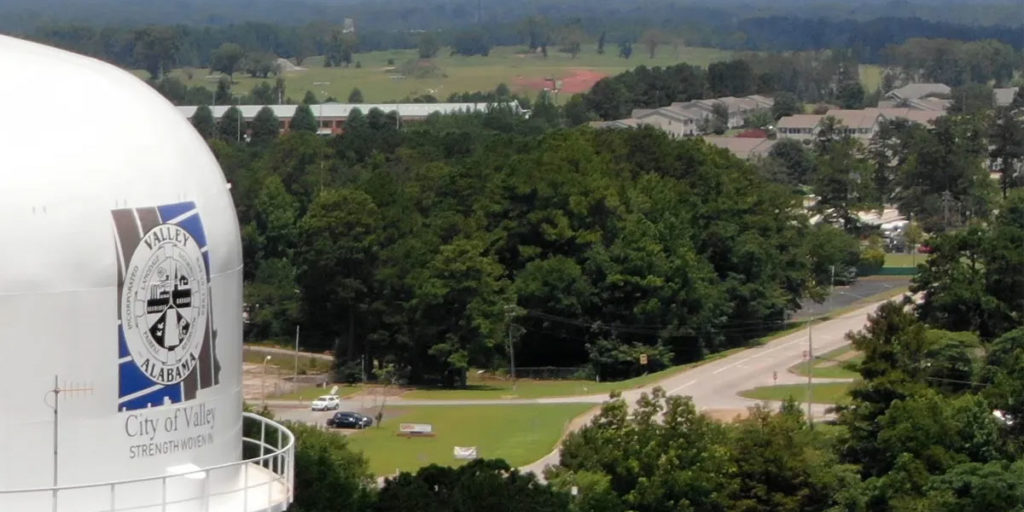Birmingham’s iconic landmarks – the John Hand, Brown-Marx, Woodward and Empire buildings – are dwarfed by skyscrapers in cities such as New York and Chicago. But when they were constructed at the dawn of the 20th century, those steel-framed towers on the corner of 20th Street and First Avenue North stood as a turning point, marking Birmingham as one of the South’s newest urban centers. It’s no wonder that downtown intersection was known as the “Heaviest Corner on Earth.”
The story about Birmingham’s heaviest corner is among many little-known facts that visitors will learn when they step into the past on the new Historic Red Ore Express. The free audio walking tour, available on the TravelStorys mobile app, traces the city’s rise from its founding in 1871 to its transformation into a world-renowned giant in the steel manufacturing industry in the 1950s.
“When people take the tour, we want them to learn about the companies and industries that were important to Birmingham’s development as the Magic City,” said Bettina Byrd-Giles, project director of the Historic Red Ore Express. “But we also want them to know about the people who built Birmingham and made it a reality. It’s not only the sites that are significant, but it’s the stories behind those sites that explain why they are important.”
Using the Red Ore Express mobile app as their guide, visitors can walk or bike along the tour route at their own pace. They can visit all 20 sites in one day or in smaller segments over time.
The app uses geofencing technology to link the stories at the various sites along the trail.
As visitors follow the map in the app, the stories will automatically trigger when they reach each new site. They are encouraged to stop and listen. If they walk to the next site too soon, they will move out of range, and the next story will begin to play.
“We hope that people will stop and take their time, enjoy the communities where these stories took place and patronize the businesses that are there now,” said Byrd-Giles.
The trail has been five years in the making, said Phillip Ratliff, president and creative director, Backstory Educational Media.
“It was the idea of leaders of various parks, greenspaces and historical sites around Birmingham,” he said. “They wanted to unite Vulcan Park with Sloss Furnaces, Ruffner Mountain and even Tannehill. Along with that, other pedestrian corridors had opened up from Avondale to Railroad Park. They wanted to get people walking and biking across these corridors.”
Ratliff and his team at Backstory Educational Media raised the funds for the project, developed and researched the stories, wrote the scripts and recorded the narration that tells each story. The authentic music and background sounds used to weave together the stories take visitors back in time, making them feel as if they are actually living those experiences.
“There are a lot of oral histories in the stories from people who worked during that era and experienced what it was like to be part of the iron and steel industry in Birmingham,” Ratliff said.
Along with learning about Birmingham’s heaviest corner, visitors will be introduced to stories behind well-known sites, like the statue of Vulcan. The gigantic iron statue was originally sculpted to represent Birmingham at the 1904 World’s Fair in St. Louis. Birmingham businessmen felt Vulcan, as the Roman god of the forge and a skilled craftsman of iron weapons and other implements, would be the ideal symbol of the city.
Visitors will also stop at Alabama Power’s Powell Avenue Steam Plant in downtown Birmingham and hear the story of how it became one of the city’s earliest sources of electricity. The plant was built by the newly founded Consolidated Electric Light Company in 1895 to provide electricity to the street railway system that ran through the downtown business center.
Powell Avenue became part of Alabama Power’s fleet of generating plants in 1952 when the company acquired Birmingham Electric Company, the then-owner of the downtown facility.
After the purchase, Alabama Power sold the railway system, and the plant then provided steam heat to the University of Alabama at Birmingham (UAB) and other Birmingham businesses until it was decommissioned in 2013. Powell Avenue is now being repurposed to become an integral part of Birmingham’s growing entertainment district.
Another significant stop along the way is Red Mountain. Here, visitors will learn how the availability of natural resources like iron ore, limestone and coal – all in one area – made Birmingham the perfect spot for an industrial city.
“People knew well before Birmingham was founded that these resources were here, and that’s what attracted investors to the area,” said Ratliff. “They saw an opportunity, and that’s how Birmingham came to be.”
Visitors will also discover how UAB grew into a tier one medical and engineering institution and how Avondale morphed from a quiet, residential neighborhood into a bustling nighttime hotspot. Other sites along the way include Sloss Furnaces, the Five Points South neighborhood and Railroad Park.
“When I was asked to get involved in this project, I was excited because it’s part of my history and part of the culture from which I come,” said Byrd-Giles, who has headed up efforts to promote, market and launch the tour. “My great-grandfather moved from rural Alabama to Birmingham for a better life. My grandfather worked at ACIPCO (American Cast Iron Pipe Company) and was one of the first Black supervisors.”
“I also had a professional interest in the project because I wanted to help tell the story that would attract tourists and help build Birmingham’s economy,” she said.
Visitors can start the tour at any site, although Byrd-Giles recommended that they begin on Red Mountain at the statue of Vulcan. Those who can’t visit Birmingham or live outside the city can take the tour virtually. Simply tap on the sites in the app to hear the stories, and double tap to view the accompanying images and texts.
The walking trail is the first of two Historic Red Ore Express tours, Byrd-Giles said. A 100-mile roundtrip driving trail, which includes 17 sites and extends from east Birmingham to Tannehill Ironworks Historical State Park, will be launched this fall.
“I’m so proud of this tour as a Birminghamian and as the granddaughter of someone who worked in the steel industry,” Byrd-Giles said. “I think it’s a unique way to tell our story.”
Ratliff said the self-guided tour allows people to view Birmingham in a whole new way.
“I really want people to move through Birmingham with a new set of glasses on,” he said. “The tour is a new way of experiencing these landmarks that we may take for granted.”
To get started, download the TravelStorys mobile app. Then, search for the Historic Red Ore Express.
(Courtesy of Alabama NewsCenter)













